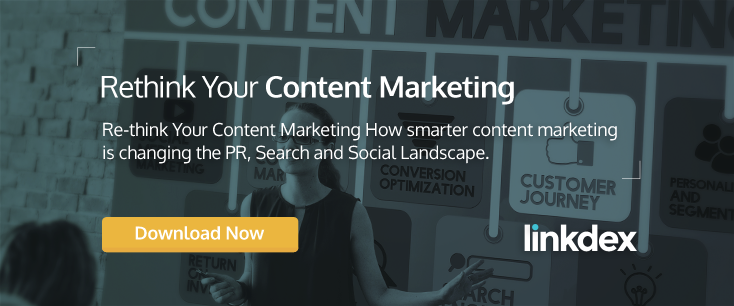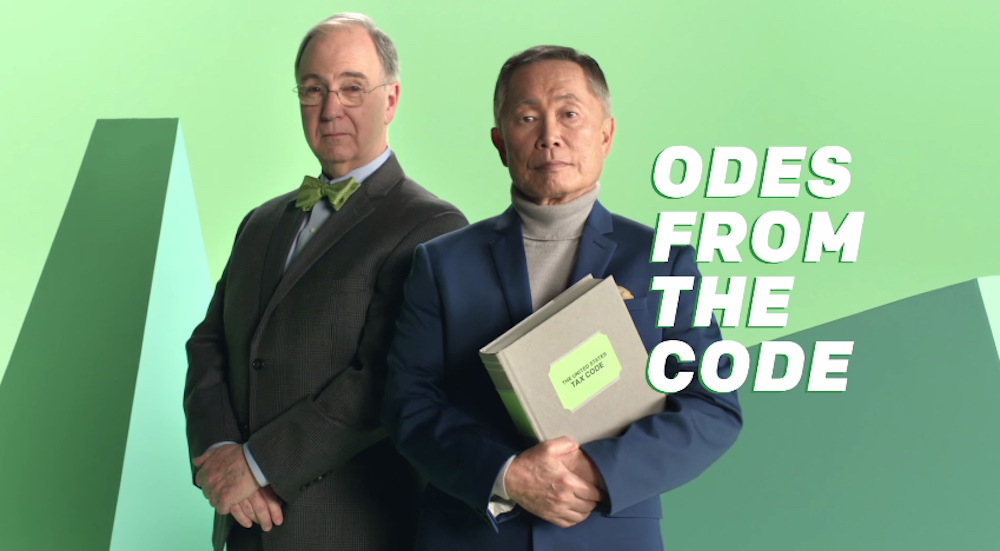Nostalgia has become an increasingly popular way for brands to connect with consumers as they tap into the past with beloved real-life figures, mascots, taglines and products, but incorporate these elements in new ways to connect with younger audiences as well. No matter what the era, nostalgia enables consumers to relive memories and, if done correctly, creates positive brand associations. But how effective is it, really? And why are so many brands turning to it at this moment in time? And how can your brand benefit?
In the annals of advertising history, 2014 may very well be remembered as the Year of Nostalgia.
Electronics retailer RadioShack kicked things off with a 30-second Super Bowl spot “meant to shed outdated perceptions of the brand for consumers in need of a reintroduction” with ’80s icons like Hulk Hogan, Mary Lou Retton, Kid ‘n’ Play and ALF.
“We’re using the Super Bowl as the platform to get people to rethink RadioShack,” said Jennifer Warren, senior vice president and chief marketing officer at RadioShack, in a statement. “This ad is meant to grab attention, make viewers laugh, and let people know, it’s out with the old and in with the new RadioShack.”
The move worked – at least in the short term. The brand was widely touted as one of the big winners of the 2014 Super Bowl, receiving nods from outlets like the Wall Street Journal. In addition, RadioShack stock went up 7 percent following the big game.
Auto manufacturer Honda, too, is incorporating toys and cartoon characters like Stretch Armstrong, Gumby, Jem and The Holograms, Little People, Magic 8‑Ball, Skeletor, Strawberry Shortcake, and G.I. Joe in its seasonal Happy Honda Days campaign, which includes six TV spots and “[pays] homage to popular toys throughout various decades,” the brand says, noting “the magic of these beloved toys has been brought to life with stop-motion animation rather than computer-generated imagery to authentically capture how these toys came to life through play.”
“With consumers inundated with holiday ads during the holiday season, our goal is to break through the clutter by helping people relive favorite childhood memories of a toy they loved during the holidays and associating that with a great deal on a new Honda,” said Susie Rossick, senior manager at Honda.
And, for its part, quick service chain Wendy’s has tapped a number of nostalgic musical favorites in its #PretzelLoveSongs campaign, including R&B group Boyz II Men.
“We know Millennials are passionate about 90s nostalgia, music and humor—and Boyz II Men delivered on all three in its rendition of #PretzelLoveSongs,” said Wendy’s Chief Marketing Officer Craig Bahner in a statement. “We partnered with Boyz II Men because the group and its members are legends—and it looks like our Pretzel Bun is becoming one, too.”
The brand has also worked with Latin artist Jon Secada in a pretzel-bun-themed remix of his 1992 hit, “Just Another Day” and pop-star-turned-TV-personality Nick Lachey, as well as The Fresh Prince of Bell Air alum and recent Dancing with the Stars champ Alfonso Ribeiro and the Karate Kid himself, Ralph Macchio, on a more recent barbecue campaign.
And then there’s insurance company Geico, which recently enlisted hip hop trio Salt-N-Pepa to do a spin of its hit “Push It” in its latest ad.
Meanwhile, other brands are instead looking to capitalize on the nostalgic value of their own internal assets.
Salt brand Morton Salt, for example, saw 2014 as an opportunity to refresh its brand identity while celebrating its long-time Morton Salt Girl mascot, who turned 100 this year. The refresh includes an updated logo with a “fresh and friendly font,” including an R that “carries a slight kick to mimic the Morton Salt Girl’s step,” and a Morton Salt Girl with “cleaner, simplified linework,” the brand says.
“We constantly listen to consumers to ensure that we continue to meet their changing needs,” said Christian Herrmann, Morton Salt CEO, in a statement. “Through our latest market research, we know that the Morton Salt Girl is synonymous with the brand and her timeless, classic look still resonates with consumers today. However, we also knew there was an opportunity to make the brand look and feel more modern and approachable.”
Other brands celebrating birthdays this year include General Mills cereal Cinnamon Toast Crunch, which turned 30 and marked the occasion in part with a blog post chronicling the evolution of its Chef Wendell character, and clothing retailer Old Navy, which celebrated its 20th birthday by asking fans to submit selfies in its #Selfiebration campaign.
Like Morton Salt, cat food brand 9Lives sought to capitalize upon a well-known internal asset and tapped digital agency Evolution Bureau to bring back its “iconic spokescat,” Morris. According to Evolution Bureau, the brand “tasked us with doing it in a way that appealed to nostalgic Morris fans while introducing the iconic orange cat to a new younger millennial audience.”
Ergo, Evolution Bureau says it created Cat’s Eye View, an interactive video experience that lets fans guide Morris with custom wearable technology. And, to increase engagement, Evolution Bureau says it seeded the site with original 9Lives commercials.
Another cat food brand, Meow Mix, asked fans to remix its iconic jingle in the Its Meow Time campaign, spurring recreations by artists like Ashworth, Hipster Orchestra and J.R. Moore.
https://www.youtube.com/watch?v=k_5zELmun9EAnd Kellogg’s waffle brand Eggo reportedly brought back its “L’Eggo my Eggo” tagline in a series of new spots.
And then there are nostalgic products in and of themselves.
Retailer Hot Topic recently stocked Underoos, the superhero-themed children’s “underwear that’s fun to wear” from the ‘70s, in adult sizes and sold out quickly.
In a tweet on November 17, Hot Topic said, “More are on the way! Should be available again in 2–3 weeks!”
And, in September, the Coca-Cola Company re-released its citrus soda Surge on Amazon, saying, “Fans thirsty for a taste of ‘90s nostalgia – or those who are simply craving a citrus-flavored sparkling beverage with a kick – can rejoice in the news that Surge is back after a 12-year hiatus.”
According to Coke, Surge is its first discontinued product to make a comeback “thanks, in part, to a passionate and persistent community of brand loyalists who have been lobbying The Coca-Cola Company to bring back their favorite drink over the last few years.”
It was first commercially available from 1996 to the early 2000s.
“If expectations are met, this may be only the first of a variety of efforts we explore to launch niche products through e‑commerce relationships,” said Wendy Clark, president of sparkling and strategic marketing for Coca-Cola North America, in a blog post.
And then there’s footwear brand L.A. Gear, which says it plans to make “a triumphant return” in spring 2015 as it “kicks off its re-birth” with the release of its Originals collection. Noting it has worked with celebrities like Michael Jackson, Kareem Abdul Jabar, Wayne Gretzky, Belinda Carlisle, Paula Abdul, and Joe Montana, the brand says it is relaunching with rapper Tyga.
So why are so many brands turning to nostalgia to connect with consumers? And is it an effective way to do it?
The Psychology of Nostalgia
In a report from inbound marketing software platform HubSpot, content strategist Erik Devaney explained that while nostalgia may be triggered by negative emotions like loneliness, these memories are generally happy and nostalgia can therefore have psychological benefits like enhanced mood, reduced stress, and increased self-esteem and feelings like life has meaning and purpose.
Therefore, if marketers can create content that makes consumers feel nostalgic, “it will also get them feeling good by extension,” Devaney wrote. “And when it comes to growing a loyal following of folks who love your business, creating content that makes them feel good seems like a winning strategy.”
In addition, per a BBC report, a series of investigations by psychologist Constantine Sedikides found nostalgia “may act as a resource that we can draw on to connect to other people and events, so that we can move forward with less fear and greater purpose.”
The Time is Right
For her part, email marketing strategy consultant Jeanne Jennings notes the current political and economic climate is marked by some upheaval including shifts in power after mid-term elections and numerous challenges on the international front, which may indicate consumers feel somewhat unsettled and the time is right for marketers to use nostalgia.
And Kristin Kovner, president of marketing strategies firm K‑Squared Strategies, notes that while nostalgia marketing has historically been popular when conditions are uncertain and consumers long for the good old days, “today it seems marketers are using nostalgia as a way to build authenticity and claim a real, long-time relationship with consumers. In a way, nostalgia marketing is the natural extension of authenticity marketing, especially during the holidays.”
What’s more, Kovner notes nostalgia marketing is just starting to take hold for millennial marketers, since millennials are just reaching the age of becoming nostalgic.
“The popularity of Throwback Thursdays, BuzzFeed listicles of ‘90s references, and the reemergence of ‘My Little Pony’ all show how this audience is ready to look back and revel in the past – including the brands and brand messages that shaped their childhoods,” she said. “As this audience starts having kids of their own, there’s an opportunity to reengage parents in order to build a relationship with this next generation.”
The Proof Is In The Pudding
And research seems to indicate nostalgia is, in fact, an effective marketing tool.
Consumers are more likely to spend money when they are feeling nostalgic, according to a study in the Journal of Consumer Research. In fact, the authors conducted six experiments that found, in part, consumers asked to think about the past were willing to pay more for a set of products than consumers who were asked to think about new or future memories, and consumers had an increased willingness to give more money to others after recalling, reflecting, or writing about a nostalgic past life event.
“We found that when people have higher levels of social connectedness and feel that their wants and needs can be achieved through the help of others, their ability to prioritize and keep control over their money becomes less pressing,” the authors say in a release.
Plus, nostalgia allows brands to quickly connect with their audiences when time is of the essence.
“Given that people are now consuming more and more of their media on mobile devices, it is getting much tougher for brands to connect with users in a meaningful way due to small screen sizes and capped video lengths of 15 seconds,” said Rob Grossberg, CEO of mobile gaming company TreSensa. “Nostalgic marketing campaigns are effective because they are eminently familiar and are, thus, able to grab a users’ attention and quickly pull at their heartstrings.”
In addition, Tessa Wegert, communications director at digital agency Enlighten, says nostalgic campaigns are appealing to brands because they increase the likelihood that ads will be shared online.
“Consumers share things that incite an emotional response, and happiness and amusement are main drivers of that,” Wegert said. “When brands dig up beloved products and mascots from the past they know it’ll resonate with customers, and those customers are primed to share the joy with others.”
How Do Brands Create Good Nostalgic Campaigns?
1. Have A Good Reason For Turning To Nostalgia
There has to be “a sound reason for it that you can articulate before going there – otherwise it’s just a shot in the dark,” Jennings said. “You should make a case based on your target audience, macro factors at play, perceived state of mind and what worked in similar instances in the past.”
2. Make Sure The Memories Your Brand Evokes Are Positive, Well-Established
Coke, for example, probably wouldn’t want to revive New Coke, Kovner said.
3. Incorporate A Knowing Tone
Per Kovner, this why Radio Shack’s Super Bowl spot was effective: “It acknowledged how out of step the current brand had become in a light, tongue-in-cheek way,” she says.
4. Consider Rolling It Out During The Holidays
That’s when “consumers are already in a ‘nostalgia’ mindset, thinking about family and tradition,” Kovner said.
5. Shake Things Up A Little
In a report from programmatic advertising and retargeting firm Chango, Vice President of Marketing Ben Plomion recommends brands “take what’s old and make it new again for a digital world” but add a unique twist to tap into consumer excitement tied to the feeling of, “I remember those!” in a successful campaign with nostalgia.
What do you think about the use of nostalgia in marketing? Is it always effective? Or do brands rely on it too much?




